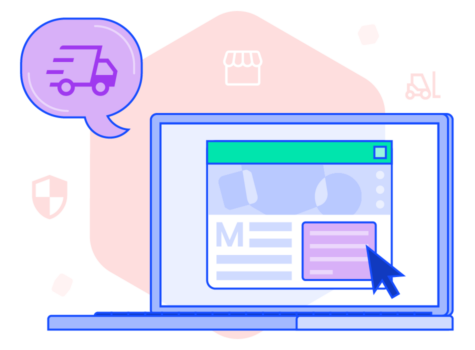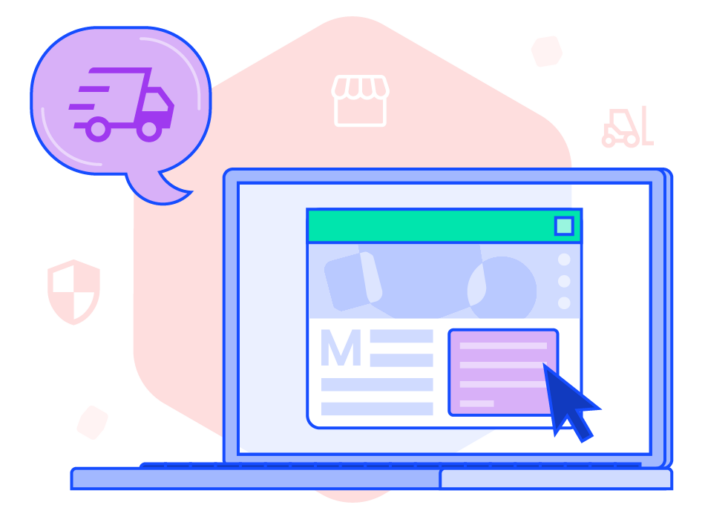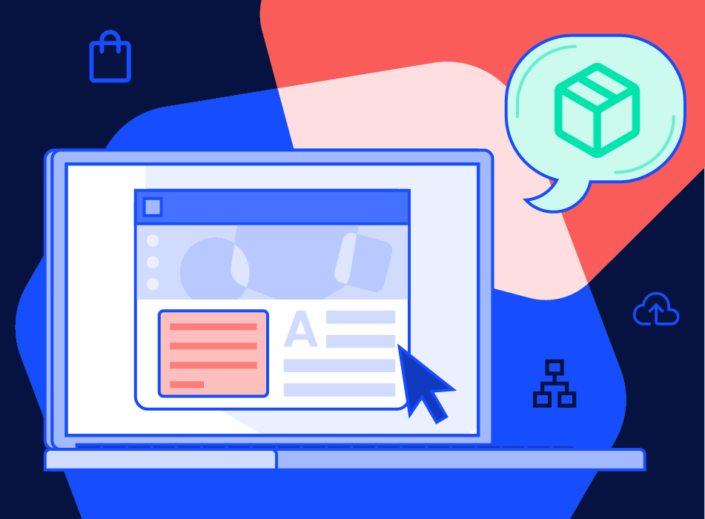Many fast-growing businesses outsource order fulfillment to a 3PL to save time, focus on core competencies, and reduce fulfillment costs. But how can you know if you’re actually saving money on 3PL costs? In order to decide whether a 3PL is a sound investment, you need to understand how much they charge.
What is a 3PL?
A third-party logistics provider, or 3PL, is a logistics partner that handles order fulfillment for businesses. The business sends inventory to 3PL facilities, where it’s unloaded, sorted, and stored. When customers place orders, the 3PL handles fulfillment tasks like picking, packing, and shipping. Understanding these services is crucial to managing 3PL costs effectively.
Many 3PLs have distribution centers located strategically across the world, allowing them to provide fast, affordable shipping to various geographic areas.
Is a 3PL more expensive than in-house fulfillment?
For businesses with low monthly shipping volumes, working with a 3PL is usually more expensive than fulfilling orders in-house. For larger companies that ship more packages, both 3PL and in-house fulfillment can be cost-effective options.
For example, as reported by Supply Chain Dive, the company DavidsTea stopped working with its fulfillment provider in 2023, deciding to handle logistics internally. After a short period of lower revenue, the brand saw a higher gross profit as a result of the change. In contrast, Levi Strauss & Co. has recently made the switch to a hybrid fulfillment model that incorporates third-party logistics providers. They predict that the new hybrid model will improve inventory management and lead to greater profitability.
Ultimately, every organization needs to weigh the costs and benefits of both outsourced and internal fulfillment, considering their goals and logistics requirements.
What is an order fulfillment fee?
An order fulfillment fee is a key component of 3PL pricing. It includes the costs associated with receiving and storing inventory, processing orders, picking and packing, and shipping packages to customers. Understanding these fees helps businesses effectively manage their overall 3PL costs.
The two most important factors in determining 3PL costs are storage space and labor requirements. How much room do you need to store inventory? How much time does it take for staff to handle your products and fulfill orders? Special handling or storage requirements can result in higher order fulfillment fees.
Common 3PL cost structures
The following are a few common 3PL pricing models that can influence your overall 3PL costs:
- Transactional. With a transactional pricing model, you pay for specific activities, or transactions, in the fulfillment center. For example, you might pay per order fulfilled or per unit picked.
- Tiered. A tiered pricing model offers different cost structures for different business sizes. This way, what you pay varies based on what services you use and how complex your fulfillment processes are. Tiered models work well for large or fast-growing businesses, providing flexibility as your shipping volume increases.
- Flat-rate. With a flat-rate structure, businesses pay a set amount for all 3PL services, regardless of how much space their inventory takes up or how many orders are fulfilled. This makes it easy to predict fulfillment costs.
- Variable. With a variable cost structure, the 3PL cost varies based on how much storage space a business is using. This allows businesses to make adjustments as needed; for example, during low-demand periods, they might send less inventory to 3PL fulfillment centers.
- Per-unit. Under this pricing structure, costs are based on individual units that the 3PL handles, such as pallets, shelves, or bins.
- Activity-based. Activity-based pricing takes into account the labor required to perform specific services. This could include picking and packing, labeling, and handling.
- Cost-plus. With this pricing structure, your business pays the actual cost of fulfillment fees, plus a pre-determined markup that allows the 3PL to cover their expenses and make a profit.
- Project-based. If your business needs to use the 3PL for a single project, you can often negotiate a one-time rate.
Now, let’s take a closer look at the fees 3PLs charge for various fulfillment services. In the next section, we’ll review the average costs of onboarding, reverse logistics, and everything in between.
3PL services and fees
Third-party logistics providers charge a variety of fees to cover different fulfillment services. You can expect to pay one-time and recurring fees for account setup and management, in addition to fees for the space your inventory takes up and the labor required to fulfill your orders.
Setup and onboarding
Third-party logistics providers charge a one-time setup and onboarding fee when you begin working with them. This fee covers the cost of integrating your systems with theirs, configuring software, preparing storage infrastructure, and establishing standard operating procedures.
Onboarding fees can also include things like receiving initial inventory, setting up product SKUs, organizing warehouse space, creating workflows, and training 3PL staff to fulfill your business’s orders.
Setup and onboarding fees depend on your business size and requirements. These fees are generally $100 minimum and can be $1,000 or more depending on your business’s size.
Account management
Account management fees are recurring fees that cover the customer service your 3PL provides. This includes any communication with your team, such as conversations about pricing and billing, inventory, and fulfillment issues. Account management costs can also cover other non-fulfillment tasks, such as document storage, system integration, and reporting.
These charges can be applied on a monthly or hourly basis. They generally range from $75 to $250 per month or $40 to $60 per hour. In 2024, the average account management fee is $236.67 per month.
Receiving
The first step of working with a 3PL is transporting your goods to their fulfillment centers. Third-party logistics providers charge receiving fees to cover the labor involved in unloading inbound shipments, counting and inspecting products, and entering them into the warehouse management system (WMS). This process also includes tasks like labeling, barcoding, and organizing the inventory in the warehouse.
Receiving fees can be structured in different ways. Most commonly, 3PLs charge an hourly rate, though some charge a flat rate. Others use a hybrid model, charging a flat rate for the first few hours and moving to an hourly rate after that. You could also pay based on the number of pallets or units that are received.
Hourly fees often range from $20 to $50, and per-pallet fees are usually between $5 and $15. In 2024, the average receiving fees are $40.79 per hour, $12.91 per pallet, and $0.35 per unit.
Warehousing and storage
One of the biggest 3PL costs is warehousing, which includes not just storing goods, but also handling and managing inventory.
Storage fees are monthly charges based on the space your inventory takes up within the 3PL’s facilities. These fees can be calculated in several ways. You might pay based on the number of pallets, shelves, or bins your inventory takes up. Alternatively, the 3PL might charge based on the area your inventory occupies in square feet or cubic feet.
If your products require specialized storage conditions, such as temperature control or food-grade storage, the 3PL will likely charge more. Extra costs can also apply if you sell large items.
Monthly storage fees in 2024 average $20.37 per pallet, $0.55 per cubic foot, $1.22 per square foot, and $2.67 per bin.
Pick and pack
Pick and pack fees are applied when workers select items from inventory and pack them for shipment. These fees are generally calculated on a per-order or per-unit basis, reflecting the labor involved in picking the right items and packaging them appropriately.
Pick and pack fees may be calculated together or separately. According to ShipBob, pick and pack fees often start around $0.20 per pick.
Packaging
While some 3PLs include the cost of packaging in picking and packing fees, others charge separately for packaging materials such as boxes, bubble wrap, packing peanuts, tape, and any other materials needed to keep products safe during transit.
Sometimes, 3PLs don’t charge for standard packaging—plain cardboard boxes or poly mailers—but add a fee for custom packaging solutions like branded boxes or eco-friendly materials.
In 2024, packaging costs range from around $0.25 to $2.50 per box, with an average of $1.19.
Kitting
Kitting, a value-added service provided by many 3PLs, is the process of assembling individual items into ready-to-ship packages or kits. Third-party logistics providers charge for kitting based on the complexity and volume of the kits assembled. Fees can be calculated hourly or per kit assembled. They might also include a combination of setup fees and per-unit charges.
While kitting fees vary greatly depending on a company’s needs, it costs an average of $39 per hour or $0.38 per touch or item.
Label printing and order inserts
Label printing fees cover the cost of generating and applying labels to products or packaging. The 3PL manages the printing process, making sure that labels contain accurate information such as product details, barcodes, shipping addresses, and any regulatory requirements. This might cost around $0.10 per shipment.
Order inserts are items placed inside packages to enhance the customer experience—things like thank-you notes, promotional flyers, product catalogs, or coupons. If you want order inserts added to your packages, you’ll probably need to pay extra. Inserts cost between $0.18 and $0.25 on average.
Shipping
Shipping costs reflect the rates carriers charge to transport packages from a 3PL’s facility to the end customer. These rates depend on factors like package weight, dimensions, shipping method, delivery speed, and distance.
Because 3PLs often negotiate shipping rates with carriers, you’ll likely be able to access volume discounts by using a 3PL. If you have already negotiated good rates with your preferred carriers, you might be able to bring those rates with you; 83% of 3PLs allow customers to use their own pricing.
Shipping costs increase with distance. Using a 3PL with distribution centers close to your customers will minimize the distance goods are shipped, allowing for faster, less expensive deliveries.
Reverse logistics and returns management
When customers return products, they’re shipped back to the 3PL’s fulfillment centers. Returns management fees encompass the costs associated with processing and handling these returned goods. Tasks include receiving returned items, inspecting them for damage or defects, restocking inventory, and updating records in the warehouse management system.
In 2024, return management feeds average $3.95 per single-item returned order, plus $0.45 per additional item.
How much does third-party fulfillment cost?
We’ve provided some average 3PL fees, but you’re still left with the big question: how much does third-party fulfillment cost for my business? The answer varies depending on the size of your business and the complexity of your fulfillment processes, so the best way to learn how much 3PL fulfillment costs is to request quotes from several 3PLs.
For an accurate quote, you’ll need to share as much data as possible about your logistics operations. This includes the number of packages you ship per month, the average number of items in each order, and any special handling or storage requirements.
Watch out for hidden costs
With so many potential fees, 3PL pricing can feel confusing. And unfortunately, not all third-party logistics providers incorporate transparency into their pricing structure.
One common hidden cost? Shipping surcharges for HAZMAT or oversized products, which aren’t included in core shipping rates. But hidden costs aren’t always so straightforward; working with an unreliable 3PL can be just as expensive as surprise fees.
Seemingly small fulfillment errors can add up to large losses from returned products. Inventory shrinkage—the number of items that are damaged or lost in the fulfillment center—can also put a financial burden on your organization.
These tips will help you choose a reliable 3PL, understand the pricing structure, and avoid hidden costs:
- Thoroughly review contracts. Carefully read and understand all terms and conditions in the contract. Check to see if your 3PL has an allowable amount of shrinkage or if they reimburse you for all missing or unsellable inventory.
- Ask about fees upfront. Ask for a comprehensive list of potential fees and charges beyond basic services during contract negotiations.
- Clarify volume requirements. Understand any minimum volume commitments and ensure they align with your business forecast and growth projections.
- Clarify service level agreements (SLAs). Negotiate SLAs to determine the performance standards your 3PL is committed to, such as order accuracy, delivery times, and responsiveness to issues.
What to look for in a 3PL
Make sure you choose a 3PL that meets your expectations and provides value, keeping in mind that the cheapest option isn’t always the best one. Answer the following questions before selecting a third-party logistics provider:
- Does the 3PL specialize in handling specific types of products?
- How transparent is the fee structure?
- What guarantees does the 3PL offer regarding service levels, delivery times, and accuracy?
- What kind of fulfillment technology does the 3PL use?
- How responsive is the 3PL’s customer service team?
- What kind of data and analytics reporting does the 3PL provide?
- What customization options does the 3PL offer?
- What is the 3PL’s geographical footprint?
- Does the 3PL have experience and capabilities in international fulfillment?
Learn how 3PLs work and get tips for choosing the right one
For a more comprehensive look at the inner workings of 3PLs—including the differences between in-house and outsourced fulfillment—check out our resources here:
Simplify your shipping with EasyPost
If your business handles fulfillment in-house, you need the right people, processes, and technology to keep costs low and maximize efficiency. EasyPost offers a suite of shipping APIs that automate the shipping process, saving businesses time and money. With EasyPost, you can integrate with dozens of carriers, find the best rates, create shipping labels in seconds, verify addresses, and more.



